Search Results
Fine Jewelry University Articles matching: “blue sapphireorig”
Showing only FJU Article results. Click here to show all results.
Fine Jewelry University (Show All FJU Articles)
-
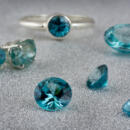
Gem in the Spotlight: Blue Zircon
…, brilliance, and flashes of color or fire just like diamond. Zircon also is known for its variety of colors. Blue zircon is the most popular color. But, zircon can be almost any color you can imagine including red, yellow, orange, brown… yellow variety of Zircon. Matura Diamond is another trade name for colorless Zircon. Starlite is the name for the blue gem variety of Zircon. The color of Starlite is rarely natural, and is almost always heat treated. Of course, the blue…
-

Gem in the Spotlight: Topaz
… comes to mind when I hear people discussing Topaz. You can hear one person say, “I love Topaz; it reminds me of a blue sky.” Then her friend says back, “Topaz may be like a golden sunset, but not the sky.” A third friend will chime in, “…, increase or maintain mental health, and even allow the wearer to go unseen by enemies. In the Victorian era, blue topaz signified faithfulness and love. Gemology As we mentioned at the start of the article, topaz comes in a huge variety…
-
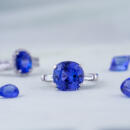
Gem in the Spotlight: Tanzanite
… diamond. But, what makes Tanzanite so popular is its color. Tanzanite’s gorgeous color is a captivating mix of blue and purple. The deep hues of violet, indigo, and blue come together in an unrivaled blend only found in tanzanite. Yet, … commonly known gems like rubies, sapphires, and emeralds. Gemology of Tanzanite Gemologists refer to this gem as blue zoisite. The vast majority (current estimates are around 95%) of tanzanite is heat treated to help bring out the …
-
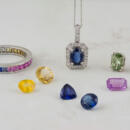
Gem in the Spotlight: Sapphire
… for thousands of years. Kings and queens have always believed that sapphires represent divine favor. The color blue was considered sacred and was worn by priests to show their connection to the sky and heaven. Sapphires were set in the … remains there, decorating the Imperial Crown ordered by Queen Victoria. Deriving its name from the Greek word for blue, sapphire used to refer to any blue stone. By the late 1800’s, the sapphire and ruby were recognized as gem varieties …
-
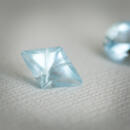
Gem in the Spotlight: Aquamarine
Aquamarine derives its name from the Latin which literally means “seawater,” a tribute to its beautiful blue color. As a member of the beryl family, Aquamarine has some illustrious cousins in addition to a rich history of its… the true spirit of the sea. aquamarine was believed to guarantee a happy marriage Best known for its beautiful blue color, aquamarine was used to bring happiness, eternal youth, and control passion. In the body, aquamarine was thought to… large crystals. Aquamarine’s main pigment comes from iron. The color spectrum of aquamarine varies from very pale blue to a deep blue, the finest specimens being the deepest in color. Most aquamarine stones have a subtle green component…
-
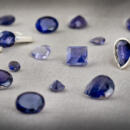
Gem in the Spotlight: Iolite
Iolite is maybe not the first gemstone people think of for their blue-violet jewelry, but it should be near the top of the list. Iolite’s color range of blue, blue-violet, and violet … endeavors. Iolite is a special gemstone that is absolutely wonderful in jewelry. The subtle range of hues from blue to violet makes for elegant rings, pendants, and earrings. All in all, iolite is a great value
-
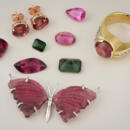
Gem in the Spotlight: Tourmaline
… colors have their own names: Rubellite: is red, pinkish red, orangy red, or pink tourmaline. Indicolite: is dark blue, dark violetish blue, or dark greenish blue tourmaline. Paraíba: is a copper colored blue, intense violetish blue, or …
-
The Birthstones
…: Aquamarine Originating its name from the Latin “aqua marina” meaning “sea water”, the aquamarine is a light blue to greenish blue beryl, most valuable when it’s a shade of darker blue. Sailors often wore amulets of aquamarine to give …. Learn more about Peridot and Spinel September’s Birthstone: Sapphire Deriving its name from the Greek word for blue, sapphire used to refer to any blue stone. By the late1800’s, the sapphire and ruby were recognized as gem varieties of…
-
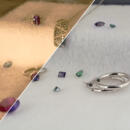
Gem in the Spotlight: Alexandrite
… most wavelengths of light very well, only transmitting green and red light. This means that depending on the light source the stone will reflect more of the accent colors of light. Since fluorescent light has a stronger greenish-blue component, the stone appears greener. Under candlelight, which has a much stronger red/orange component, the stone will appear redder. Alexandrite has a refractive index of 1.746-1.755 with an average birefringence of .010. It has a …